.txt
Type of resources
Topics
Keywords
Contact for the resource
Provided by
Years
Formats
Representation types
Update frequencies
Resolution
-

Carbon and oxygen isotopic composition of planktic foraminifera spanning the early and middle Eocene succession recovered from borehole 16/28-Sb01. For description of this sedimentary sequence see Haughton et al. 2005. Petroleum Geology: North-West Europe and Global Perspectives, Proceedings of the 6th Petroleum Geology Conference, 1077–1094.
-
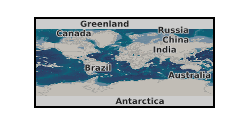
The dataset contains 15 plots and data for time-dependent pressures and temperatures at various locations along a 2582-m-long well and at various simulation times. The realistic scenarios taken into considerations are applied to the Goldeneye depleted reservoir in the North Sea. Pure CO2 is injected into the well and then discharged in the Goldeneye reservoir. Six different scenarios are considered: three different injection durations (linear ramp-up of the inlet mass flow rate from 0 to 33.5 kg/s over 5 minutes, 30 minutes, and 2 hours) and two different upstream temperatures (278.15 K and 283.15 K). Data is currently restricted until publication.
-

Carbon and oxygen isotopic composition of benthic foraminifera spanning the early and middle Eocene succession recovered from borehole 16/28-Sb01. For description of this sedimentary sequence see Haughton et al. 2005. Petroleum Geology: North-West Europe and Global Perspectives, Proceedings of the 6th Petroleum Geology Conference, 1077–1094.
-
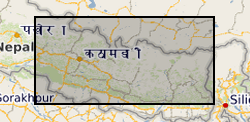
This is a point (.txt) file of 12,838 Asia Summer Monsoon (ASM) - triggered landslides that occurred across central-eastern Nepal in the period 1988 - 2018. This inventory includes the landslide locations (x, y coordinates of landslide crests) and geometries, as well as the following landslide attributes, where each attribute was extracted at the position of the landslide crest: elevation (m), slope (o), aspect (o), planform and profile curvature, excess topography (m3), local relief (m), distance to channel (m), distance to road (m), near channel ksn, near channel specific stream power (SSP), average 30-year precipitation, total annual rainfall, peak monthly rainfall, landuse, Permafrost index, geology, and tectonic unit. Note, landslides were not mapped in the years 2011 and 2012 due to scan line errors in the Landsat 7 imagery. These landslides and associated attributes were collected for the purpose of assessing how landslide spatial distributions and susceptibility vary through time.
-
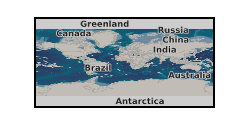
This dataset is used and fully described/interpreted in the paper: Passelegue, F. X., N. Brantut, T. M. Mitchell, Fault reactivation by fluid injection: Controls from stress state and injection rate, submitted to Geophys. Res. Lett. Text files contain raw and processed data. Mechanical data are raw. Load needs to corrected (offset) from piston friction, measured at the beginning of each run before the hit point. Axial displacement is converted into sample shortening by correcting the load from machine stiffness, which is equal to 480 kN/mm (calibrated on Mon. 14 Mar. 2016). Data include a set of elastic wave first arrival times, obtained from time of flight measurements using an array of piezoelectric transducers and the cross-correlation method detailed in Brantut (2015) (see reference above). Two separate files correspond to mechanical data from experiments conducted at 50 and 100 MPa confining pressure (""mech_Pc=???MPa.txt""). One file (""sensors.txt"") contains the initial positions of each piezoelectric transducer. Files named ""wave_?_Pc=100MPa.txt"" (?=1,2,3 or 4) contain time series of arrival times during the four injections conducted at Pc=100MPa. Each column consists in the time-of-flight between a given pair of sensors (x->y, where x is the index of source sensor, and y is the index of the receiver sensor, as per their numbering in the ""sensors.txt"" file.) In all the data files, the first column corresponds to a common time basis, in seconds.
-
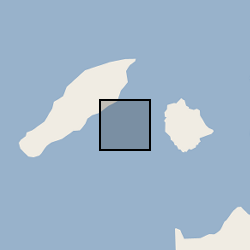
The folders contain the inputs required to run numerical simulations of the Anak Krakatau eruption in 2018, including ERA wind field data, and model input files (.bak). Two sets of simulations were used. The first set of simulations were inversions (see inversion file), which allows input parameters to be estimated through application of numerical model to observations. Multiple inversions were used accounting for different amounts of water entrained at the source (Fractions of 0 - 0.25 in 0.05 intervals). The best fit input parameters were used to run the forward model (see ForwardModel folder), and the results were compared to asses those most representative of observed eruption dynamics (Sim6).
-
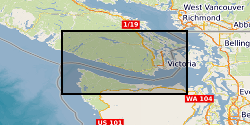
Detections of tremor at a set of template locations over the course of four slow slip events in 2004, 2008, 2009, and 2010. As well as identified bursts of tremor within these windows. The dataset consists of: Detected spikes in the tremor time series Each file contains a list of identified spikes in the inter-component coherence time series. LFE (Low frequency earthquakes) locations The locations of LFEs identified by Bostock, M. G., Royer, A. A., Hearn, E. H., and Peacock, S. M. (2012), Low frequency earthquakes below southern Vancouver Island, Geochem. Geophys. Geosyst., 13, Q11007, doi:10.1029/2012GC004391. Cp values through time 12 files containing time series of inter-component and/or inter-station coherence at a range of LFE locations Further descriptions are available in the README and in the preprint hosted on EarthArxiv: Gombert and Hawthorne, Rapid tremor migration during few minute-long slow earthquakes in Cascadia, 2022, doi: 10.31223/X56623.
-

The response of the benthic microbial community to a controlled sub-seabed CO2 leak was assessed using quantitative PCR measurements of benthic bacterial, archaeal and cyanobacteria/chloroplast 16S rRNA genes. Similarly, the impact of CO2 release on the abundance of benthic bacterial and archaeal ammonia amoA genes and transcripts, and also to the abundance of nitrite oxidizer (nirS) and anammox hydrazine oxidoreductase (hzo) genes and transcripts. Samples were taken from four zones (epicentre (zone 1); 25m distant (zone 2), 75m distant (zone 3) and 450m distant (zone 4)) during 6 time points (7 days before CO2 exposure, after 14 and 36 days of CO2 release, and 6, 20 and 90 days after the CO2 release had ended). Changes to the active community of microphytobenthos and bacteria were also assessed before, during and after CO2 release using Denaturing Gradient Gel Electrophoresis of cyanobacteria/chloroplast 16S rRNA. Changes to the composition of the active bacterial community was assessed first using Terminal Restriction Fragment Length Polymorphism (T-RFLP) of bacterial 16S rRNA. In depth comparisons of possible changes to the active bacterial community at zone 1 and 4 before, during and immediately after the CO2 release was performed using 16S rRNA 454 pyrosequencing. This dataset was created by Plymouth Marine Laboratory (PML) under the program QICS (Quantifying and monitoring environmental impacts of geological carbon storage) which was funded by the Natural Environment Research Council (NERC), with support from the Scottish Government. The results are contained in three text files. QICS project website: www.bgs.ac.uk/qics/home.html. Tait et al. (2015) Rapid response of the active microbial community to CO2 exposure from a controlled sub-seabed CO2 leak in Ardmucknish Bay (Oban, Scotland). IJGGC DOI: 10.1016/ijggc.2014.11.021. Watanabe et al. (2015) Ammonia oxidation activity of microorganisms in surface sediment to a controlled sub-seabed release of CO2. IJGGC DOI: 10.1016/j.ijggc.2014.11.013.
-
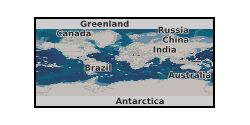
Data recorded during hydrostatic pressurisation and triaxial rock deformation experiments of Westerly granite and Darley Dale sandstone. Data consists of mechanical data (load, displacement, confining pressure) and pore pressure data (up- and downstream pore pressure, upstream intensifier volume, four pore pressure transducers mounted on sample). Contains all data necessary to evaluate the results presented in the paper entitled: 'Fluid pressure heterogeneity during fluid flow in rocks: New laboratory measurement device and method' by Brantut and Aben, submitted to Geophysical Journal International, and available at arXiv (arXiv:2006.16699).
-
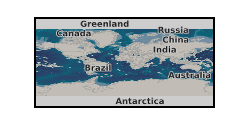
The data include the following: 1. Simulation input files (parameters used in free energy Lattice Boltzmann simulations). 2. Results from these simulations and the corresponding analysis, as presented in the manuscript "Pore scale modeling of drainage displacement patterns in association with geological sequestration of CO2". Free energy lattice Boltzmann method: A thermodynamically consistent numerical scheme to solve the hydrodynamic equations of motion, associated with two-phase flow at the pore-scale. Simulations were accelerated by using multiple general-purpose graphics processing units (GPGPUs).
 NERC Data Catalogue Service
NERC Data Catalogue Service